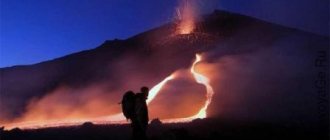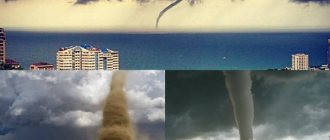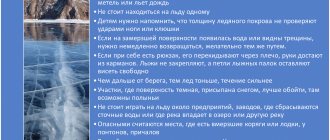Among the dangers that people have to reckon with are volcanoes; there are a great many of them on the planet, both active and dormant or already extinct. They are located in close proximity to faults in the earth's crust, in zones of tectonic activity. Let's look at the rules of safe behavior during a volcanic eruption, let's figure out how to act and what, on the contrary, should be avoided.
What is the danger
A volcanic eruption has several dangerous factors for humans:
- Hot lava flows (magma).
- Rocks and ash may be ejected from craters.
- Often the eruption is accompanied by mud flows and floods.
- A frequent companion to volcanic activity is earthquakes of varying strength.
- Even if the eruption has passed, the danger remains - volcanic ash often causes allergic reactions.
That is why every person, even those living outside the zone of seismic activity, needs to know the rules of behavior during a volcanic eruption. Often on vacation in hot countries - Greece, Bali, India - similar disasters occur. And while local residents, accustomed to them, know how to act, tourists succumb to panic.
Anticipation of a volcanic eruption
The already active Icelandic volcano Bárdarbunga is expected to erupt in 2015, leading to unprecedented new emissions of toxic sulfur dioxide into the skies over Europe. The eruption will change weather patterns, reducing global grain production and doubling grain prices.
Fortunately, the sharp rise in prices will only be partly driven by actual yield declines and will largely be driven by fears of an event where poorer grain-producing countries try to increase their stocks.
The eruption is currently confined to a large, long fissure, a fissure that opened on Mount Hohluraun near Bárdarbunga itself, creating a lava lake of about 70 square kilometers (until mid-November). The eruption released more sulfur dioxide into the atmosphere than all European industries combined.
The eruption is currently confined to a large, long fissure, a fissure that opened on Mount Hohluraun near Bárðarbunga itself, creating a lava lake measuring about 70 square meters. The eruption released more sulfur dioxide into the atmosphere than all European industries combined.
Meanwhile, scientists are constantly recording a series of earthquakes along the huge subglacial caldera of the Bárdarbunga volcano itself, whose area is about 80 square meters. km (i.e. almost the same as in Manhattan). The caldera is sinking quickly and is at risk of collapsing when magma flows from the volcano through a nearby fissure on Mount Khokhluran.
The collapse could trigger a much more intense eruption, possibly leading to climate change across the planet.
Preparation
When going on vacation to places where there are volcanoes, even dormant ones, you should prepare, carefully monitor reports of possible eruptions, take this information into account and leave the danger zone in a timely manner. What other rules of conduct during a volcanic eruption should you know?
Further, the volcano may be located at a sufficient distance from a populated area, so there is no need to be afraid of lava flows, but ash fall is quite likely. Having learned about this, you need to carefully close the doors and windows in your home, stock up on food and always fresh drinking water for a period of 5-7 days. In addition, everyone in a seismically active zone must always have an “alarm suitcase” assembled, where they must put:
- A first aid kit with the necessary medications.
- Battery operated radio and flashlight.
- Map.
- Sheets, warm clothes for each family member.
Animals should not be left on the street, they should be placed in the house, otherwise the four-legged friends may not survive the disaster. If you have a car, you need to put it in the garage in advance. Otherwise, ash that gets into the engine can damage the vehicle.
Volcanic eruptions: dangers and precautions
⇐ PreviousPage 9 of 21Next ⇒A volcanic eruption occurs because various chemical phenomena are constantly occurring in the depths of the mountain, which once reach their peak, a powerful explosion occurs, followed by the release of these substances to the surface of the earth. Before an eruption, a volcano usually releases a wide variety of asphyxiating gases and vapors, as well as emissions of ash and pieces of rock. This ash and pieces of rock resemble hail and can cover the ground with a layer of several centimeters. Only some time after this, a powerful explosion occurs and streams of hot lava rush down from the volcano. This lava destroys everything in its path, turning huge cities into piles of ash.
The speed of lava movement is equivalent to the speed of the river flow, and it is simply impossible to escape from it. It is also impossible to hide somewhere from lava, since it simply burns trees, and fire water, as it is also called, contains many gases that, evaporating, poison the air and destroy all living things.
Like other natural disasters, a volcanic eruption often happens unexpectedly and a person has no choice but to quickly respond to this incident. The danger posed by an active volcano is inversely proportional to the distance to the crater. That is, those who live near the smoking mountain should worry the most.
Most powerful eruptions are accompanied by earthquakes, which seem to warn all living things around that danger is very likely in the near future. It is in this situation that emergency services alert the population about a potential volcanic eruption, thereby hinting to pack up and move out.
So, what are the basic rules of behavior during a volcanic eruption?
1. If you live in close proximity to a volcano, constantly monitor reports on its condition, prepare a hot backpack with the most necessary things and documents. He must always be ready.
2. If you receive a warning about an eruption or possible subsequent complications (flooding, mudflow), close your home, collect all the essential things and look for shelter, preferably away from fire-breathing, ash-spewing, lava-oozing slopes until better times, until the danger of a volcanic eruption has passed.
3. If you did not have time to fly to the other side of the world and the eruption took you by surprise, be sure to protect your body and head from ash and stones. Almost everything will protect your head, from wooden structures to cardboard; a DIY gauze bandage or a respirator will take care of your breathing. Well, if you are 100% prepared, then you can take out your gas mask.
4. Volcanic eruptions are often accompanied by floods, mudflows, and flooding. Therefore, avoid rivers, especially near a volcano, try to climb as high as possible so as not to become a victim of water flows or mudflows.
5. If during a volcanic eruption you leave the danger zone by transport, choose a route opposite to the direction of the wind. This will help you avoid unpleasant encounters with ash in the future.
6. The average speed of lava movement is 40 km/h. It is possible to escape from it by transport. As in the case of ash, it is worth choosing a direction of movement perpendicular to the flow.
7. Wear as many warm clothes as possible. This will protect your body from acid, which will be formed in huge quantities as a result of reaction with the environment SO2.
8. After the eruption, do not rush to return to your home. The signal should be messages from emergency services. If possible, spend a few days away from the area affected by the volcano.
9. Upon returning to your home, try not to open the windows for as long as possible (2-3 weeks) until the ash has completely disappeared from the environment. Remember to protect your respiratory organs.
In each individual case, you should make informed decisions without panic. Vanity will only aggravate the situation, and in this case it will be much more difficult to survive. It is worth noting that the danger from a volcanic eruption exists not only for the region around the mountain. Potentially, volcanoes threaten the lives of all life on Earth, so you should not be lenient towards these hot neighbors.
⇐ Previous9Next ⇒
Site search:
While at home
Let's consider the rules of conduct during a volcanic eruption point by point if the disaster finds people in their home:
- Close windows, doors, ventilation.
- You should remain calm, do not panic, and do not try to escape. It is very important not to leave the shelter.
- If one of your relatives is currently at work or at an educational institution, you should not try with all your might to find him. It's better to stay in a safe haven.
- Turn on the radio and listen to messages from the Ministry of Emergency Situations. All information about the course of the disaster and the actions of the population will be transmitted.
Evacuation may be required, so be prepared to leave the shelter when instructed to do so by radio.
While on the street
Let's consider the rules of conduct during a volcanic eruption while outside the house:
- It is necessary to immediately protect your head and body from stones and ash with clothing.
- It is very important to protect the respiratory tract with a cotton-gauze bandage; if you don’t have one with you, you can use clothing, preferably made from natural fabrics and slightly moistened with water. For example, tear off a sleeve from a shirt and make an improvised respirator out of it.
- An eruption may be accompanied by flooding, so you should seek refuge in elevated areas.
If a disaster finds a person in close proximity to a seismically unstable area, then the rules of behavior during a volcanic eruption are as follows:
- Covering your head with clothes, you should run towards the road.
- When driving a personal vehicle, you should expect the wheels to get stuck in ash. In this case, you will have to leave the vehicle and save yourself.
- Having noticed a ball of gas and hot dust in the distance, you need to take refuge in an underground shelter; they are available in most seismically dangerous areas. If for some reason this is not possible, it is best to dive underwater and wait it out.
If you get caught in a hail of volcanic emissions, you should sit down on the ground with your back to the volcano, protecting your head with your hands, a bag, a backpack - in any way.
Volcanic eruption in Russia
The Kamchatka Peninsula and the Kuril Islands are part of the so-called Pacific Volcanic Ring of Fire, which contains 75% of all active volcanoes on Earth. On September 24, 2014, in Russia, in Kamchatka and the Kuril Islands, there were almost 8 thousand volcanoes. Of these, 283 have been thoroughly studied and described, which is perhaps the greatest threat to humans and their economic activities.
According to the Institute of Volcanology and Seismology, Far Eastern Branch of the Russian Academy of Sciences, there are 55 active and 217 extinct volcanoes in Russia.
The Volcanic Explosivity Index (VEI) is the most commonly used indicator to measure the severity of an eruption, reflecting the amount of material released at points 1 (Hawaiian eruption) to 8 (supervolcanic eruption).
The most powerful eruption in Russia recorded in the history of observations had a value of 5 points - on October 20, 1955, after 1000 years of hibernation, the Bezymyanny volcano was formed (Klyuchevskaya group, Kamchatka, height - 2882 m). On March 30, 1956, a large explosion occurred, which split the top of the volcano's cone, causing a massive mudslide and awakening ash at an altitude of 45 km. There were no deaths.
Since 2000, there have been two eruptions with an explosion force of 4 points (10 million m3 of excavated soil, the height of the ash column is 10-25 km; this is what happened with the eruption of the Icelandic volcano Eyjafjallajökull in 2010, which seriously disrupted air traffic in the region).
On June 11, 2009, the eruption of the Sarycheva volcano began (uninhabited Matuya island, Bolshaya Kurilskaya ridge, 1446 m). The eruption was accompanied by nine large explosions, ash was thrown to a height of up to 16 km, the length of ash clouds reached 1000 km. The volcano's activity was recorded by the International Space Station. According to volcanologists, the eruption was the strongest in the entire period of observation of the Kuril volcanoes.
On November 27, 2012, the Plosky Tolbachik volcano of the Klyuchevskaya group of Kamchatka volcanoes began to erupt. During the eruption, the volcano, which formed a fault on the slope about 5 km long, ejected about 1.2 thousand tons of lava per second, lava flows stopped 17-20 km from the source. On December 27, the volcano's cone was destroyed by an eruption. During the eruption, a strong cyclone swept over Kamchatka, resulting in a large ash cloud. Ash fell in the settlements of Kozyrevsk and Mayskoye, 35-40 km from the volcano. The eruption received its own name in honor of the 50th anniversary of the Institute of Volcanology and Seismology of the Far Eastern Branch of the Russian Academy of Sciences (the second case of a name in the history of Kamchatka).
Since 2000, eruptions with an explosive hazard of 3 points (1 million cubic meters of ejected material, height of the ash column - 3-15 km) have been observed more than 10 times on the Kamchatka volcanoes Bezymyanny, Shiveluch (height - 3307 m), Kizimen (2376 m) , Karymsky (1486 m), Klyuchevaya Sopka (4835 m) and Zhupanovsky (2958 m).
Unlike frequent earthquakes, volcanic eruptions in Kamchatka and the Kuril Islands do not cause serious material damage and, due to their distance from the main corridors, do not create problems for aviation, but can cause disruptions in ground transport. For example, on October 28, 2010, transport links with the regional center of Ust-Kamchatka were interrupted due to almost simultaneous large eruptions on the Zhiveluch and Klyuchevaya Sopka volcanoes, which released ash up to 10 kilometers high. On October 18, 2010, the glacier melted due to the activation of the Klyuchevaya Sopka volcano, as a result of which the Studena River overflowed its banks and disrupted communication with several villages.
Ashfall
Another danger that accompanies volcanic activity is ash. You need to do this:
- Carefully close all windows and doors in the house and caulk large cracks.
- Don't go outside unless absolutely necessary.
- If you need to go outside, you should wear a protective suit, which cannot be brought into the house.
- If ash gets into the house, all people should immediately put on respirators or cotton-gauze bandages. If it was not possible to prepare these protective equipment in advance, a towel will protect the respiratory system.
- Household appliances are covered with film or thick cloth; they cannot be used during an ash fall.
After the ashfall is over, you should clean the house, after putting on a cotton-gauze bandage. It is very important to immediately clear the roof of ash and other volcanic emissions; they are often quite heavy and can cause collapse.
What not to do
We briefly reviewed the rules of behavior during a volcanic eruption. There are some things that should not be done during this disaster:
- Under no circumstances should you hide in basements and cellars; people may be buried under a layer of ash.
- You should also not hide in ravines and gorges if you are caught outside by an eruption, since in the event of a flood, people will be trapped.
- After the eruption, you should not use your car; ash fall can damage the engine.
- If you need to go outside, you should not wear synthetics; under the influence of gases, they can catch fire.
- If a disaster finds a person on the street, you should not lie down on the ground, since heavy poisonous gases are concentrated here, so there is a high risk of poisoning.
These rules of behavior during a volcanic eruption will help you survive and not get hurt. The most important thing is not to panic, to provide assistance to those who need it (the weak, the wounded, pensioners, children). Most often, people living in seismically unstable areas know what needs to be done, so it is better for visitors to consult with them.









